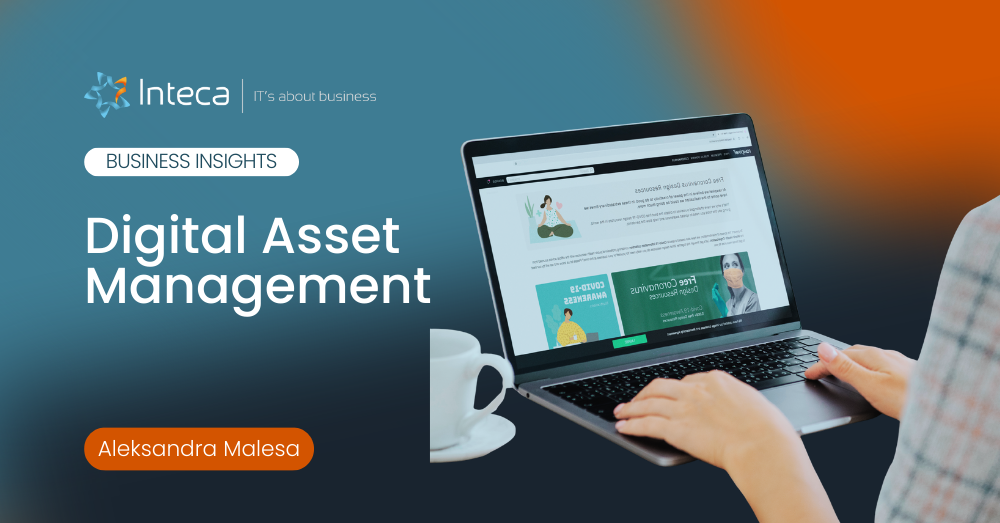An effective records and information management program (RIM) is essential for all organizations to manage their physical and electronic records during the company’s existence. Companies nowadays must have consistent and accountable records management policies in order to keep up with the ever-changing regulatory landscape and growing volume of information. Having a records management strategy in place can help your business decrease risk, streamline operations, and comply with applicable regulations.
What is a record management system?
A record management system is an essential tool for organizations of all sizes to store, archive, organize, and retrieve records such as policies and procedures. Nuxeo document management supports such activities and has the right tools. Having an organized record management system helps ensure that all policies and procedures are properly documented and stored so that they can be easily accessed when needed.
Having the right record management policy is especially important for policymakers who need visibility into the policies and procedures that are in effect and to make sure that they are up-to-date and compliant with legal requirements. Although the importance of record management for policies and procedures is paramount, there are different types of record management.
Each of them entails different benefits of using a record management system for policies and procedures, thus it’s so critical to select the right record management system for your organization.
To what do we attribute the term “record?”
While many people may view records management as a tedious or unimportant administrative chore, the truth is that it is everyone’s job in any given firm.
The term “records” refers to any written or digital documentation of business transactions. Although the word “record” conjures images of paper documents, any item or piece of data that has value to a business can be considered a record.
In what ways are records required?
In order to determine what kinds of paperwork your company should maintain, you need to look at a few different factors. Is there anything your company does that should be written down? I need to know your mission-critical stats. Where can I find a record of the decisions made or the steps taken in the course of your work? What kind of documentation is required of your business by the various regulatory agencies? Permit files, project files, reports, publications, timecards, personnel files, contact files, and so on are all potential examples.
It is important to establish which documents must be maintained by first considering how they pertain to your organization’s goals, past, and current management structure. You need to maintain complete control over these corporate records since they are essential to the operation of your business. One control option is platform managed services.
What is the record’s life cycle?
One of the most essential ideas in records management is that every record has its own life cycle. The term “life cycle” is used to describe the several phases that any legally binding corporate document must pass through. The next step after creating a record is filing it in a managed repository according to some kind of predetermined, logical structure from which it can later be retrieved.
When data in a record is no longer relevant, it is deactivated. The fate of a record depends on its category: preservation, transfer, archiving, or destruction.
The importance of a record management application
Applications for managing records streamline the entire records management process without disrupting your company’s core operations. Implementing consistent regulations throughout a business is made easier with the help of a records management program. It lowers the overall price of complying with rules and regulations.
Applications for managing records make it possible to implement consistent policies and procedures for handling the information generated by a company’s day-to-day operations. Records can be filed according to a predetermined scheme, the life cycle of documents managed, records retrieved using just incomplete information, and records ready for disposal identified.
Security and auditing features built specifically for the purposes of records managers are typical features in software designed for this purpose.
- Easier and more effective archiving, retention, and destruction of records and record sets.
- Lists of all records that can be moved, added to, or disposed of.
- With audit trails, you can monitor the ins and outs of data during their entire lifecycle.
Different types of record management
As we’ve mentioned above, a record management system is a system that stores, organizes, and retrieves records, such as policies and procedures. It is an essential tool for organizations of all sizes to store, organize, and retrieve records quickly and easily. Record management systems can help organizations streamline document workflow processes, as well as provide an easy way to store and retrieve documents.
There are several different types of record management that organizations can use. These include electronic records, paper records, records management programs, and records management policies.
- Electronic Records: Electronic records are digital records that are stored in a computer or other electronic device. This type of record management system is often used by organizations that need to store large amounts of data quickly and securely.
- Paper Records: Paper records are physical documents that are stored in file cabinets or other storage containers. Paper records are best used for short-term storage, as they can be more easily damaged or destroyed over time.
- Records Management Programs: Records management programs are software applications that allow organizations to manage their records digitally. These programs can help to streamline document workflow processes, as well as provide an easy way to store and retrieve documents.
- Records Management Policies: Records management policies are sets of rules and guidelines that dictate how records should be handled and stored. These policies help to ensure that records are properly managed and maintained, which helps to improve compliance with legal requirements.
The activities related to a record management
The goal of record management is to ensure that records are properly preserved, organized, and available for use when needed, while also ensuring that they are protected from unauthorized access or tampering. It is common practice for a records manager to carry out the following tasks:
- Designing, authorizing, and implementing a records classification scheme and a records retention policy.
- Making arrangements for the temporary and permanent archival storage of records (both paper and electronic).
- Finding and labeling documents already in existence or being created, and putting them away in the appropriate locations under established protocols.
- Managing the flow of information within and beyond the company by coordinating the sharing of records.
- Adhering to a retention policy for archiving and destroying records in accordance with operational requirements, operating procedures, statutes, and regulations.
Benefits of records management procedures
Having an organized record management system helps to ensure that all policies and procedures are properly documented and stored so that they can be easily accessed when needed. There are several benefits of using a record management system for policies and procedures, including:
- Streamlined Processes: A record management system can help to streamline processes by providing an efficient way to store, organize, and retrieve documents. This can help to increase efficiency, as well as reduce the amount of time spent searching for documents.
- Improved Efficiency: With a record management system, organizations can quickly access documents when needed, which can help to reduce the amount of time spent searching for information. This can help to save time, improve productivity, and reduce costs associated with manual document retrieval.
- Ensuring Compliance: A record management system can help organizations stay compliant with legal requirements by providing an organized system for storing documentation. This can help to reduce the risk of penalties related to non-compliance.
- Increased Records Retention: A record management system can help organizations improve their records retention by providing an efficient way to store documents for long-term use. This can help to reduce the risk of losing important information due to outdated storage methods or accidental destruction.
Features of a record management system for policies and procedures
When selecting a record management system for your organization, it is important to consider the features it offers in order to ensure that it meets your needs. Some features of a record management system for policies and procedures include:
- Document Management: Document management features allow organizations to store, organize, search, and retrieve documents quickly and easily. This feature enables organizations to quickly access the information they need when needed.
- Policy Management System: A policy management system helps organizations manage their policies by providing an efficient way to store, organize, distribute, and review them. This helps ensure that all policies are up-to-date, compliant with legal requirements, and accessible when needed.
- Records Management Software: Records management software provides an easy way to store and manage documents digitally. This software can also help organizations automate document workflow processes, as well as provide an efficient way to store documents for long-term use.
- Management System: A management system helps organizations manage their documents by providing an efficient way to store, organize, search, and retrieve information quickly and easily. This system can also help to automate document workflow processes and ensure compliance with legal requirements.
How to select the right record management system
When selecting a record management system for your organization, there are several factors you should consider in order to ensure you select the right one for your needs. Here are some tips on how to select the right record management system for your organization:
- Research and Compare Different Systems: When selecting a record management system for your organization, it is important to research and compare different systems in order to find the one that best fits your needs. Be sure to consider factors such as cost, features, user interface, security measures, etc.
- Understand Your Needs: It is important to take the time to understand your organization’s specific needs in order to ensure you select a record management system that will meet those needs. Consider factors such as how many users you will need the system for, how much storage space you need, what type of documents you will need to store, etc.
- Balance Price and Features: When selecting a record management system for your organization, it is important to balance price with features in order to get the most value for your money. Be sure to research different systems in order to find one that offers the features you need at a price you can afford.
Conclusion
Every business that needs to see into its policies and procedures to stay in line with regulations needs a record management system. A record management system can help an organization with many different things, including standardizing procedures, increasing productivity, meeting regulatory standards, and keeping more documents for longer.
Companies can benefit in many ways from using a record management system for policies and procedures, including the following: increased efficiency, decreased costs associated with manual document retrieval operations, and full compliance with all applicable laws and regulations.
It’s crucial to do some comparison shopping when looking for a record management system so that you can locate one that fits your needs without breaking the bank.




